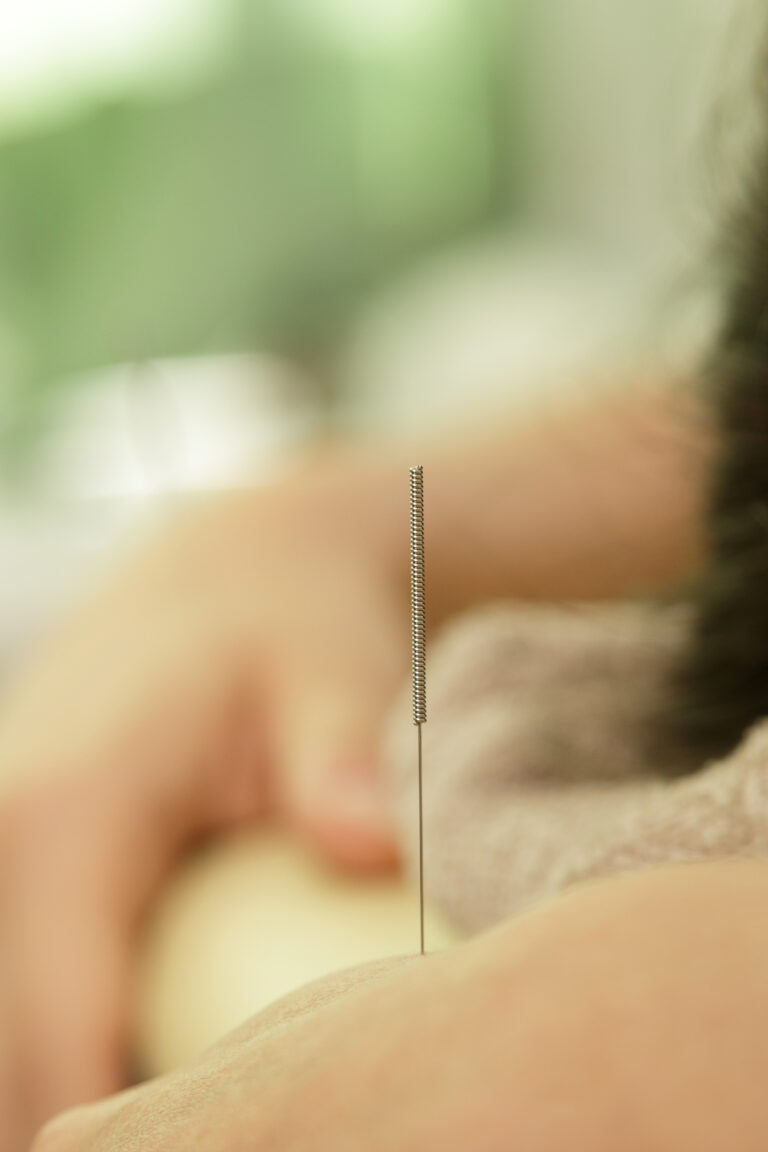By Nicole Munoz and Ben Greenfield
BLOOMSDAY IS ONE OF the biggest road-races in the county. From its inauspicious beginning in 1977, it has become a not just a competition, but a cultural event. It draws participants of all skill levels and ages to experience the best of Spokane. If you need a reminder of the distance, Bloomsday is a 12K (7.46 miles). This may not be a marathon, and you may think that “Doomsday Hill” is just a scare tactic, but Bloomsday is not an event for the unprepared. Whether your goal is to grab a new PR or just to finish, now’s the time to be thinking about your training (if you haven’t already started).
TRAINING BRINGS ABOUT structural and functional adaptations that allow your body to work more efficiently, and improved efficiency leads to improved performance.
Your training regimen should reflect your ultimate goal; a beginner will train very differently than a seasoned runner. Your workout should reflect the FITT principles of Frequency, Intensity, Duration, and possibly the Type of exercise. Incorporating an adequate warm-up and cool-down before and after your training runs is important. A warm-up period increases blood flow; increases elasticity of muscles and connective tissue; and hopefully can help prevent injury. Just as important, cooling down allows your heart rate to normalize and blood flow to redistribute throughout your body.
If it’s your first race, your goal should be to finish with a smile. Try a walk-run method if you’re thinking, “I’m not sure I can run that long.” This has been a very successful method for many first-time runners and some like it so much they decide to stick with it. It’s performed with time intervals. For example, start with a 2-minute run/jog followed by a 1-minute walk (2:1). Do 5 to 10 “cycles” (15-30 minutes of total exercise), and increase accordingly. You’ll find that over time you’ll be able to extend your running time and decrease your walking time.
Maybe the walk-run method isn’t for you. If so, start your training with shorter-distance runs and increase weekly. The general rule of thumb is to increase your weekly mileage by no more than 10% (depending upon your training history and current fitness status). However, if you’re a first-time runner this is a good rule to help avoid injury. You should plan on running 3-5 times/week for 20-90 consecutive minutes. Increase your frequency and duration as you continue your training plan. Below is an example of an introductory program with time goals that increases by ~10% per week. Don’t worry about the distance-you’ll be able to cover greater distances with greater efficiency. This is only the first four weeks of a sample program; you can continue to add time to your runs as the weeks progress.
RUNNING INTENSITY & HEART RATE
Let’s talk a bit about running intensity using heart rate. A heart rate monitor can validate that you’re training in the proper zone, typically between 65-90% of your heart rate max (65-90% of HRmax can be calculated by (220-age) x 0.65-0.90). If you don’t have a heart rate monitor, use the rating of perceived exertion (RPE) scale. This is a scale of 6-20 where 6 represents no exertion and 20 represents all-out exertion. Most people should train somewhere between 13-18 (“somewhat hard” to “very hard”).
The easiest and most convenient way to determine your intensity is with the “talk test.” Simply, while on your run you should be able to maintain a conversation with your running partner. The goal-answer in sentences, not in paragraphs. If you can only blurt out single words, you’re working too hard; if you can recite novels you’re not working hard enough.
More experienced runners should incorporate a variety of runs into their training. Here’s a short description of different types of workouts:
- EASY- comfortable controlled runs of moderate distanceLONG- this type of run should increase to eventually be a minimum of the race distance (~8 miles for Bloomsday)
- TEMPO- these runs are somewhere close to your lactate threshold, i.e., ~80-90% of your
heartrate max and sustained for 20-40 minutes - SPEEDWORK- similar to Tempo runs, these workouts consist of “bursts” of short distances (400-800 meters) performed at or below your goal race pace.
Include at least one Easy, Long and Tempo run each week in your program. Speedwork should be done every other week; progress to once per week with increased training. Incorporating these different types of runs develops your aerobic capacity and increases your lactate threshold that will allow you to sustain a faster pace for a prolonged period of time.
Focus on maximizing your running efficiency with Tempo runs that help you become faster and stronger. Start by performing Tempo runs twice/week for a distance of 2 miles; add distance as the weeks progress until you’re able to sustain your Tempo run for 4 miles. This can decrease your minute/mile pace and help you achieve a new PR. Incorporate at least one active rest day into your schedule to provide for recovery. This means a day off from running-think “stroll through the park,” not couch potato.
FLEXIBILITY
Although we’ve focused on the aerobic component of running programs, don’t neglect flexibility and strength training to possibly prevent injuries and aid in recovery. Avoid stretching cold muscles as it may lead to muscle strains. Your stretching should minimally include the muscles predominantly used during your runs (i.e., calves, quadriceps, and hamstring groups), as well as any additional areas you choose. Hold for at least 15-30 seconds, repeat if possible, and perform daily. Additionally, a supplemental strength-training program can contribute to running efficiency. Do 8-10 different exercises that incorporate major muscle groups, performing 8-12 reps and 1-2 sets with ~60-90 seconds between exercises.
Hopefully by now you’re contemplating your next run or maybe even your first. Let’s not get too far ahead of ourselves just yet, because exercise is only one-half of the equation. Nutrition also plays a big role in your performance and training.
NUTRITION
Even the best training plan is futile in the absence of good nutrition. To enhance recovery from exercise and stabilize energy levels, you should eat whole and natural foods, choosing fresh fruits and vegetables, raw nuts and whole grains, and to a limited extent, lean dairy and meat products. A typical day of Bloomsday fueling might start with a breakfast, such as oatmeal and berries, a mid-morning serving of fruit, a fresh salad with chicken breast for lunch, a mid-afternoon handful of almonds and a fillet of salmon with roasted vegetables for dinner. Eating frequently, in the range of 6-10 times per day, helps keep your metabolism elevated and your body’s storage carbohydrate(glycogen) levels topped off for exercise.
The key to adequate calories is to take in enough fuel. This will allow your body to properly adapt to the stress of exercise, while not taking in so much fuel that you store the extra calories as fat. A rough guide for active women is to multiply your weight in pounds by 12, men by 14. This will give a baseline number of calories for maintaining weight. The ratio of carbohydrates, proteins, and fats is also important. For runners, an ideal diet consists of 50-70% slow-digesting, fiber-rich carbohydrates, paired with 15-30% lean proteins and 15-20% healthy fats.
To maintain energy levels during a workout without experiencing stomach discomfort, you can safely consume 0.5 grams/pound/hour of a quick-digesting carbohydrate. While your body can sustain nearly 2 hours of intense exercise with existing carbohydrate stores of 1500-2000 calories, you may find that you’re able to exercise at a higher intensity when fueling during a workout. This is because maintaining higher blood glucose levels during exercise can reduce your rating of perceived workout exertion (RPE). Energy gels, fuel belts, and water bottle holders can help make this logistically feasible. Interestingly, caffeine can also reduce RPE, as well as enhance carbohydrate absorption, but only if you avoid it for several days prior to the workout, then ingest about 1-2.5mg/lb 30-45 minutes prior to activity.
Try to time your most carbohydrate-rich meals before and after exercise, and make sure to eat a mix of carbohydrate and protein within 60 minutes after every workout. This carb/protein blend will enhance amino acid uptake, carbohydrate storage, recovery and energy for the next day’s workout (Fifteen to thirty minutes is the window of time during which the enzymes responsible these tasks are going to be working at their optimal rates, but sometimes it’s difficult to get your hands on a snack that quickly after a workout or a race.). The number of calories in an effective post-workout meal depends on your body size, but generally falls in the range of 200-350 calories, and includes 1 gram of protein for every 3-4 grams of carbohydrate. Sample post-workout meals include:
- 1 banana blended with yogurt, honey, and scoop whey/soy protein powder.
- Two handfuls of walnuts, cranberries, and coconut flakes
- 1/2 chicken breast with two slices whole grain bread
- 1 cup oatmeal with cinnamon, honey, and 1 egg
- 1 medium size sweet potato with 1 tablespoon almond butter
- 1 piece fresh raw fruit with yogurt and nuts
- 1 cup of cottage cheese with handful of blueberries
- 1 bowl of cereal with a handful of nuts
- 1/2 salmon fillet with 1 cup quinoa, amaranth or millet
- 1 cup brown rice and beans
- Recovery mix for endurance athletes (preferred brands include Hammer Recoverite or Endurox R4)
- 1 energy bar (preferred brands include Bumblebar, Lara Bar, or Hammer Bar)
Avoid proteins and fats prior to exercise. These take a long time to digest and can cause precious water to move from the extremities to the gut. High-fiber foods, like apples or beans, taken as a pre-run meal, can also cause gut problems. The ideal pre-workout or pre-race meal consists of 300-500 calories of an easily digested carbohydrate, like sweet potatoes or cream of wheat, 2-3 hours before the start of your activity/event. To top off your energy levels and raise blood sugar, take in 50-100 calories of a sports drink or gel 5-10 minutes beforehand. If you find that you are “hitting the wall” during your runs (fatigue, dizziness, excessive muscle soreness and abnormally high heart rates), this may indicate depletion of your carbohydrate stores and inadequate fueling.
While nutrition is important, hydration is paramount! Sufficient fluid intake maintains your cooling capabilities and is crucial to energy production. Multiply your weight in pounds by 1/2. This is approximately the number of fluid ounces/day your body needs. Drink 17-25 ounces of water/hour (a typical large water bottle is 20-25 ounces) every hour for 2-3 hours leading up to exercise. Sip frequently in small amounts leading up to a run, and try to taper water intake 20-30 minutes prior to avoid stitching. If you’re training for less than one hour in cool conditions, it may not be necessary to drink during exercise, and you can replace the amount of fluid lost by weighing yourself before and after your workout (“A pint’s a pound the world around.”). For training sessions lasting more than an hour, try to drink 17-25 ounces of water or electrolyte drink in small and frequent sips during your workout. Unless it’s hot or humid, drinking over 28 ounces of water/hour can actually lead to a dangerous water-intoxicated condition called hyponatremia. If you’re drinking popular sports drinks during your work-outs, remember to add this volume to your total water intake per hour. Check the label carefully to see exactly how many servings, ounces, and calories are contained in the bottle. One bottle is often two to four servings.
If you’re adequately hydrated, but still cramping while running, you may not be taking in enough electrolytes. Sodium, potassium, calcium and magnesium are essential for nerve transmission and muscle contraction. If you’re a heavy sweater, salt tabs/caps during running can help reduce cramping. Salt loss is highly variable among individuals, however, and you may need to experiment to determine what works best for you.
You should race as you train, so all of the nutrition and hydration rules you follow in your training also apply to Bloomsday. There are just a few pre-race considerations to bear in mind. For the week leading up to the race, don’t worry about carbo-loading; rather, focus on quickly refueling your workouts with a carbohydrate:protein mix as per above. Keep your energy levels topped off and don’t let yourself go hungry in that last week. Likewise, don’t worry about a large carbohydrate-loading dinner the night before- this will just “sit in your stomach” during Bloomsday. Instead, focus on a big breakfast the day before the race, followed by frequent, small meals the rest of the day, and a light dinner of familiar food. As you make your final preparations for the race, remember to pack important items like your water bottle, fuel belt, energy gels and electrolytes. If you fuel and hydrate wisely in your training, you’ll be ideally prepared for Bloomsday!
ABOUT OUR AUTHORS:
NICOLE MUNOZ is an Exercise Physiologist who lives in the Spokane area. She attended Oregon State University where she obtained a bachelors degree in Exercise Physiology and Washington State University where she received her master’s degree in Exercise Physiology. She came to Spokane after living in the Boulder, Colorado area where she spent most of her time outside running, skiing and hiking. Nicole shares her love of the outdoors with her fiancé TJ and their two Labrador retrievers, Ruby and Emma. You can contact Nicole at: [email protected].
BEN GREENFIELD holds bachelor’s and master’s degrees in sports science and exercise physiology from University of Idaho, and is a certified NSCA personal trainer, NSCA strength and conditioning coach, Serotta bicycle technician and ISSN Sports Nutritionist. He has authored multiple books on metabolism, nutrition and fitness and is an expert in holistic wellness management. With over 9 years experience in coaching professional, collegiate, and recreational athletes from all sports, Ben is the director of sports performance for Champions Sports Medicine, a full service medical and performance center for athletes of all abilities. He is also owner of Pacific Elite Fitness, a local and online endurance athlete coaching service. You can contact Ben at:
(208) 883-7705 or
[email protected].
RESOURCES:
BLOOMSDAY:
www.bloomsdayrun.org
FITNESS AND TRAINING:
Runner’s World:
www.runnersworld.com
Cool Running:
www.coolrunning.com
LOOKING FOR YOUR NEXT RACE?
Check out the Bloomsday Road
Runner’s Club at:
www.brrc.net
EXERCISE NUTRITION:
NutritionData:
nutritiondata.com
Iowa State University Extension:
www.extension.iastate.edu/nutrition/sport













